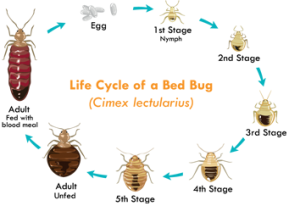Ideal Kings Pest Control Cincinnati: Premier Exterminators
Ideal Kings Pest Control Cincinnati: Premier Exterminators
Blog Article
Kinds Of Pest Control: Which Technique Is Right for Your Infestation?
When faced with a parasite problem, the option of a proper method for parasite control is vital in properly taking care of the situation. By discovering the various kinds of bug control approaches offered, individuals can make informed decisions tailored to their one-of-a-kind circumstances, ensuring a more sustainable and reliable result in bug removal.
Chemical Parasite Control
Chemical parasite control includes using artificial or naturally derived chemicals to handle and remove pest populaces effectively. This technique is commonly utilized in farming, forestry, and residential setups to battle a large array of bugs, including weeds, bugs, and rodents. The usage of chemical pesticides can give quick and targeted services to pest problems, making it a preferred choice for lots of individuals and companies.
One of the vital benefits of chemical parasite control is its capability to swiftly get rid of bugs, decreasing the danger of damages to crops, residential property, and human wellness. By making use of specific chemicals that target specific insects, this technique can properly regulate invasions while lessening injury to valuable microorganisms and the environment when applied appropriately.
Nonetheless, using chemical pest control likewise elevates concerns concerning potential adverse results on non-target varieties, water sources, and human health and wellness. It is crucial to adhere to security standards, use chemicals properly, and think about different parasite control approaches to lessen these risks and guarantee sustainable pest management methods.
Organic Insect Control
Organic parasite control, additionally understood as biocontrol, utilizes living organisms to manage and reduce parasite populations normally. This technique harnesses the power of nature to manage insects without the demand for synthetic chemicals. Biocontrol can entail the intro of natural adversaries of the parasite species, such as parasites, predators, or virus, to subdue bug populaces. By utilizing the insect's all-natural predators or microorganisms, biological bug control uses a lasting and environmentally pleasant option to pest monitoring.

Mechanical Pest Control
Utilizing physical and manual approaches to manage parasite populaces, mechanical parasite control uses an alternative technique that does not depend on the usage of living organisms or artificial chemicals. This method involves making use of barriers, catches, or other gadgets to physically prevent or remove insects. By blocking bug entrance factors or establishing traps to catch them, mechanical insect control can effectively decrease invasions without introducing chemicals right into the setting.
One typical instance of mechanical pest control is using mesh screens on doors and windows to stop bugs from entering buildings. This easy yet effective technique serves as a physical obstacle, maintaining parasites out while enabling for proper ventilation. In addition, devices like mousetraps, fly swatters, and ultrasonic repellents drop under the mechanical pest control group.
While mechanical insect control methods can be labor-intensive and require normal monitoring and maintenance, they use a eco friendly and lasting remedy for managing insect problems. By combining various mechanical strategies, home proprietors can create an extensive pest control approach that reduces reliance on chemical pesticides.
Physical Insect Control

Some common physical insect control methods include using obstacles such as internet or screens to stop parasite access, catches to catch and eliminate parasites, and hand-picking to physically eliminate parasites from plants or structures. Furthermore, techniques like warm treatments can be made use of to regulate bugs like bed insects by increasing the temperature to degrees that are dangerous to the pests.
Physical bug control is specifically valuable in incorporated pest monitoring (IPM) strategies, where several pest control approaches are combined for efficient bug management while minimizing the usage of chemicals. By utilizing physical parasite control methods, individuals can efficiently resolve pest problems with very little ecological influence.
Integrated Pest Monitoring
When implementing physical insect control techniques as part of bug monitoring approaches, Integrated Parasite Monitoring (IPM) becomes a detailed method that leverages different strategies to effectively regulate pest populaces. IPM concentrates on long-lasting prevention of pests with a mix of organic, cultural, physical, and chemical devices tailored to details parasite concerns. By integrating several control tactics, IPM aims to minimize the threats related to parasites while also lowering dependence on chemical options.
One trick element of IPM is the emphasis on tracking and analyzing pest populations to establish one of the most proper control approaches. This proactive approach permits very early treatment and targeted methods, bring about more efficient pest administration. Additionally, IPM advertises eco-friendly techniques by focusing on non-chemical control approaches and just using chemicals as a last resource.
Conclusion

By using the insect's all-natural predators or microorganisms, organic insect control offers a environmentally friendly and lasting service to pest monitoring. - Kings Kings best pest control cincinnati cincinnati pest control
Utilizing physical and hand-operated methods to handle pest populations, mechanical insect control offers an alternative technique that does not rely on the use of living microorganisms or artificial chemicals.An effective technique to taking care of bug populations without counting on chemical or organic methods entails the usage of physical bug control strategies.When implementing physical insect control methods as component of insect management strategies, Integrated Bug Monitoring (IPM) emerges as an extensive strategy that leverages various strategies to properly manage pest populations. Chemical pest control involves the usage of chemicals, organic bug control uses all-natural killers, mechanical bug control involves physical obstacles, physical insect control includes capturing or removing bugs, and incorporated bug management combines numerous techniques for a holistic strategy to pest control.
Report this page